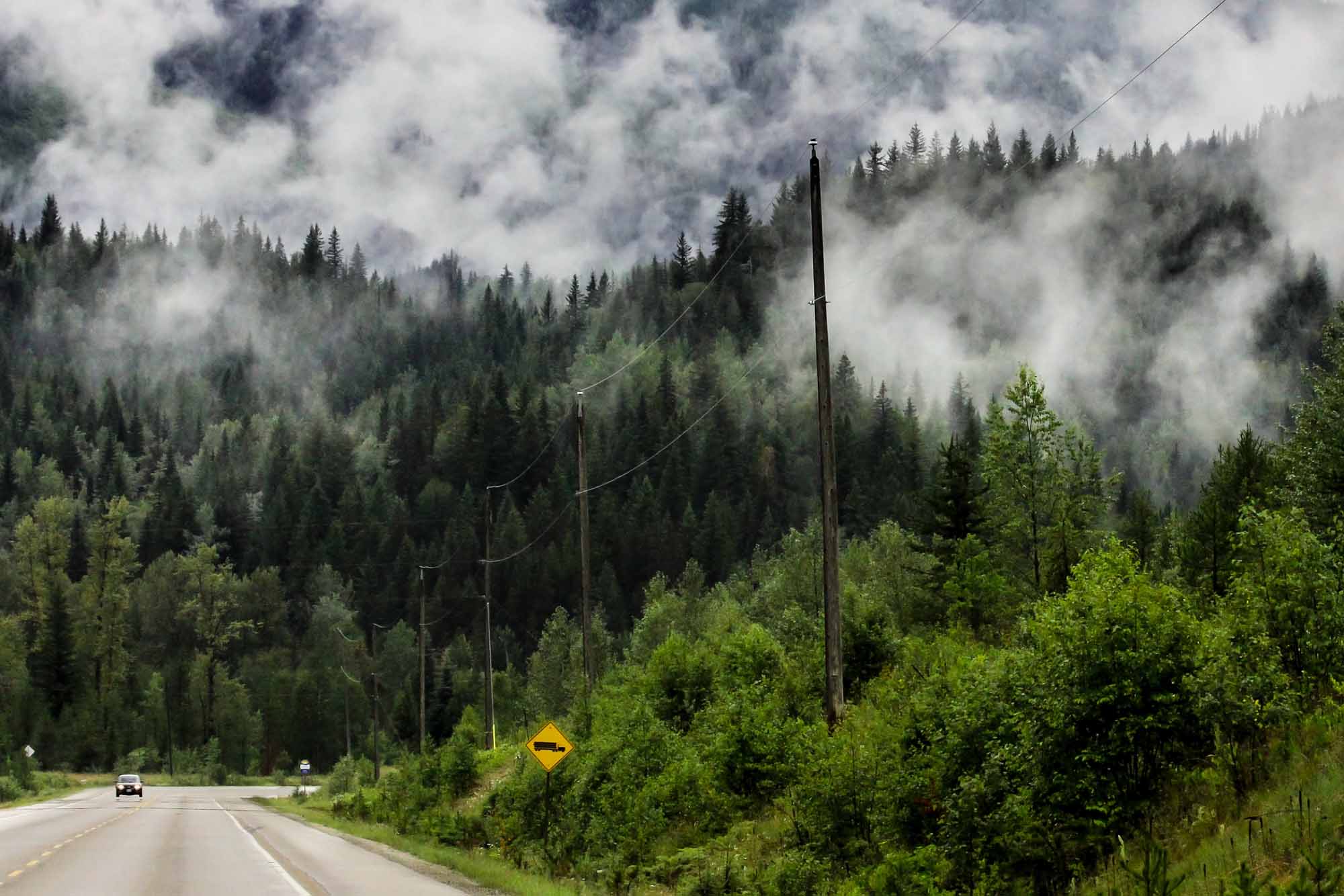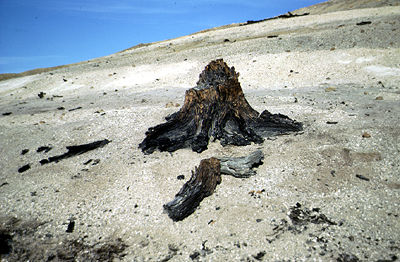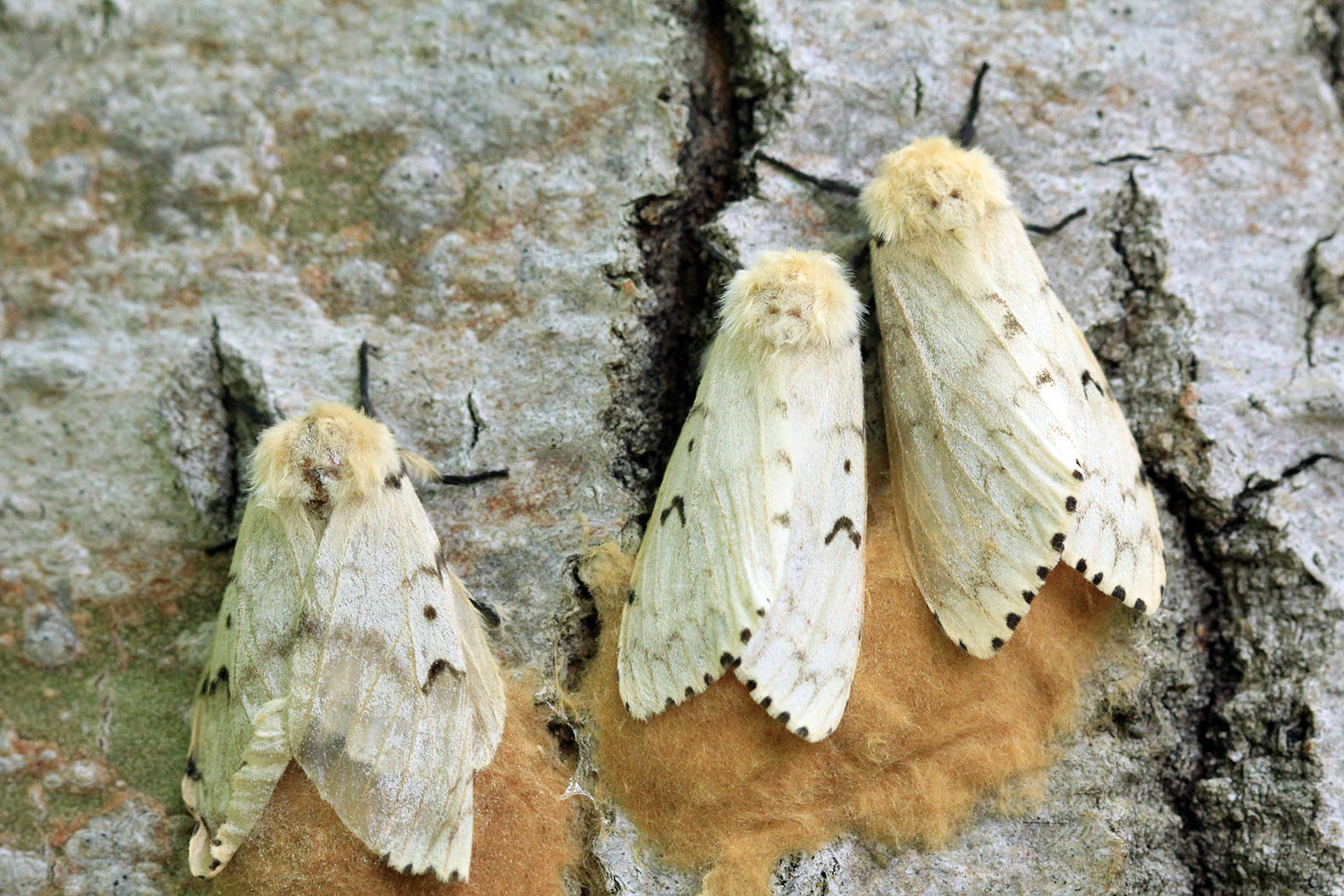Browse "Nature & Geography"
-
Article
Forest Harvesting
Forest harvesting involves cutting trees and delivering them to sawmills, pulp mills and other wood-processing plants. Its practical components include road construction, logging and log transportation.
"https://d2ttikhf7xbzbs.cloudfront.net/media/media/8b0c97bf-7642-4d5a-9eff-4010192da77d.jpg" // resources/views/front/categories/view.blade.php
https://d2ttikhf7xbzbs.cloudfront.net/media/media/8b0c97bf-7642-4d5a-9eff-4010192da77d.jpg
-
Article
Forest Regions
A forest region is a major geographic belt or zone characterized by a broad uniformity both in physiography and in the composition of the dominant tree species. Canada can be divided into eight forest regions.
"https://d2ttikhf7xbzbs.cloudfront.net/media/media/b56c04a4-f128-4027-93d9-f3a9c96c6632.jpg" // resources/views/front/categories/view.blade.php
https://d2ttikhf7xbzbs.cloudfront.net/media/media/b56c04a4-f128-4027-93d9-f3a9c96c6632.jpg
-
Article
Forest Survey
Foresters use forest surveys to obtain information on the condition of the FOREST and monitor any changes, since there are not only surveys of standing trees, but also surveys after logging as well as forestry surveys aimed at prescribing treatments.
"https://development.thecanadianencyclopedia.ca/images/tce_placeholder.jpg?v=e9dca980c9bdb3aa11e832e7ea94f5d9" // resources/views/front/categories/view.blade.php
https://development.thecanadianencyclopedia.ca/images/tce_placeholder.jpg?v=e9dca980c9bdb3aa11e832e7ea94f5d9
-
Article
Forestry
Forestry is the science and practice of caring for forests. Both the meaning and practice of forestry in Canada have evolved over time.
"https://d2ttikhf7xbzbs.cloudfront.net/media/media/e919b19c-7ba7-46cc-9c8e-d6867c26a6f7.jpg" // resources/views/front/categories/view.blade.php
https://d2ttikhf7xbzbs.cloudfront.net/media/media/e919b19c-7ba7-46cc-9c8e-d6867c26a6f7.jpg
-
Article
Forestry Education
Throughout the late 1980s and the 1990s, there was a tremendous evolution of FORESTRY in Canada and around the world. Forestry became increasingly important for both the ECONOMY and the ENVIRONMENT, and the practice of forestry became more complex.
"https://development.thecanadianencyclopedia.ca/images/tce_placeholder.jpg?v=e9dca980c9bdb3aa11e832e7ea94f5d9" // resources/views/front/categories/view.blade.php
https://development.thecanadianencyclopedia.ca/images/tce_placeholder.jpg?v=e9dca980c9bdb3aa11e832e7ea94f5d9
-
Article
Fossil
Fossil [Lat fossilis, "dug up"], trace of an ancient animal or plant preserved in the Earth's crust. Palaeontology is the modern, scientific study of fossils, but these curious objects have attracted attention since ancient times.
"https://development.thecanadianencyclopedia.ca/images/tce_placeholder.jpg?v=e9dca980c9bdb3aa11e832e7ea94f5d9" // resources/views/front/categories/view.blade.php
https://development.thecanadianencyclopedia.ca/images/tce_placeholder.jpg?v=e9dca980c9bdb3aa11e832e7ea94f5d9
-
Article
Fossil and Dinosaur Bonebeds
Part of a macrofossil, ceratopsian (horned) dinosaur bonebed at Dinosaur Provincial Park, Alberta (courtesy David A. Eberth).Fossil and Dinosaur Bonebeds Bonebeds are notable accumulations of modern or FOSSIL bones and teeth from more than one individual that occur in a geologic stratum or on the surface of the ground. Although modern bonebeds are common, the term is most often used in reference to ancient occurrences, in particular, fossil bones of large animals such as DINOSAURS...
"https://d2ttikhf7xbzbs.cloudfront.net/media/media/02a642a0-0d77-4886-9c75-55a389c9b77a.jpg" // resources/views/front/categories/view.blade.php
https://d2ttikhf7xbzbs.cloudfront.net/media/media/02a642a0-0d77-4886-9c75-55a389c9b77a.jpg
-
Article
Fossil Animals
The first animals were microscopic in size and left no known fossil remains. The oldest animal fossils occur in sediments deposited under shallow equatorial seas over 600 million years ago.
"https://development.thecanadianencyclopedia.ca/images/tce_placeholder.jpg?v=e9dca980c9bdb3aa11e832e7ea94f5d9" // resources/views/front/categories/view.blade.php
https://development.thecanadianencyclopedia.ca/images/tce_placeholder.jpg?v=e9dca980c9bdb3aa11e832e7ea94f5d9
-
Article
Fossil Plants
"Plant" refers to familiar land plants, and also to aquatic plants, mosses, liverworts and algae plants. Although not technically plants, fungi and bacteria are often included. Palaeobotany is the study of ancient plant life using fossil evidence. Plant fossils are found coast-to-coast in Canada, from 45-million-year-old mosses in British Columbia to fossil forests on Axel Heiberg and Ellesmere islands in the Canadian Arctic.
"https://d2ttikhf7xbzbs.cloudfront.net/media/media/17c83e96-a43b-4b20-82a8-016902d93bab.jpg" // resources/views/front/categories/view.blade.php
https://d2ttikhf7xbzbs.cloudfront.net/media/media/17c83e96-a43b-4b20-82a8-016902d93bab.jpg
-
Article
Four Major Insect Pests of Forests in Canada
Many insects are considered pests to Canada’s forests, meaning they cause significant ecological or economic damage to forest ecosystems. These species can injure trees in various ways, including boring through wood, eating leaves, and introducing pathogens to trees. These stressors can cause economic damage by reducing the amount of wood fibre that can be harvested and can sometimes negatively impact the ecosystem. While some of these pests have been recently introduced to Canadian forests from other parts of the globe, the majority of insect forest pests in Canada are native species. Under ordinary conditions, these species are natural sources of disturbance and diversity that can help to maintain healthy forests over long periods. However, human-mediated factors such as climate change, the introduction of non-native species, and biodiversity loss have more recently worsened the impacts that certain species can have on Canadian forests. Below is a list of just a few of the many such insects impacting Canadian forests, along with the estimated area of forest, in hectares, that a population outbreak defoliated or killed as well as the year that outbreak occurred.
"https://d2ttikhf7xbzbs.cloudfront.net/insectpestsofforests/spongy-moth.jpg" // resources/views/front/categories/view.blade.php
https://d2ttikhf7xbzbs.cloudfront.net/insectpestsofforests/spongy-moth.jpg
-
Article
Fowler's Toad
The Fowler’s toad (Anaxyrus fowleri) is a medium-sized, earthen-coloured toad that is native to Eastern North America. In Canada, Fowler’s toads are only found in a few small areas along the north shore of Lake Erie. This species lives in places with sandy or gravelly soils into which individuals can burrow; Fowler’s toads spend much of their time underground. Due to small and declining populations, the Fowler’s toad is endangered in Canada.
"https://d2ttikhf7xbzbs.cloudfront.net/FowlersToad/CrowleyFowlersToad.jpg" // resources/views/front/categories/view.blade.php
https://d2ttikhf7xbzbs.cloudfront.net/FowlersToad/CrowleyFowlersToad.jpg
-
Article
Frank Slide
At 4:10 AM on 29 April 1903, 74 million tonnes of rock crashed down the east slope of Turtle Mountain in the Crowsnest Pass region of Alberta
"https://d2ttikhf7xbzbs.cloudfront.net/media/media/698e80ed-51d4-40c7-a75f-36d14b5e66b3.jpg" // resources/views/front/categories/view.blade.php
https://d2ttikhf7xbzbs.cloudfront.net/media/media/698e80ed-51d4-40c7-a75f-36d14b5e66b3.jpg
-
Editorial
Frank Slide: Canada's Deadliest Rockslide
The following article is an editorial written by The Canadian Encyclopedia staff. Editorials are not usually updated.
"https://development.thecanadianencyclopedia.ca/images/tce_placeholder.jpg?v=e9dca980c9bdb3aa11e832e7ea94f5d9" // resources/views/front/categories/view.blade.php
https://development.thecanadianencyclopedia.ca/images/tce_placeholder.jpg?v=e9dca980c9bdb3aa11e832e7ea94f5d9
-
Article
Fraser River Canyon
The Fraser River Canyon was formed during the Miocene period (22.9-5.33 million years ago) when the river cut down into the uplifting southern part of the Interior Plateau of British Columbia. The canyon characteristics of this
"https://d2ttikhf7xbzbs.cloudfront.net/media/media/49e5b82d-d0a2-4ca6-aa37-99ecf1243a3d.jpg" // resources/views/front/categories/view.blade.php
https://d2ttikhf7xbzbs.cloudfront.net/media/media/49e5b82d-d0a2-4ca6-aa37-99ecf1243a3d.jpg
-
Article
Fraser River Gold Rush
In 1858, around 30,000 gold seekers flooded the banks of the Fraser River from Hope to just north of Lillooet in British Columbia’s first significant gold rush. Although it dissipated by the mid-1860s, the Fraser River Gold Rush had a significant impact on the area’s Indigenous peoples and resulted in the Fraser Canyon War. Fears that the massive influx of American miners would lead the United States to annex the non-sovereign British territory known as New Caledonia also resulted in the founding of British Columbia as a colony on 2 August 1858 (see The Fraser River Gold Rush and the Founding of British Columbia). By the mid-1860s, the Fraser Rush collapsed, and British Columbia sank into a recession.
"https://d2ttikhf7xbzbs.cloudfront.net/media/new_article_images/FraserCanyonWar/Fraser Canyon near Chapmans Bar, Daniel Marshall(1).jpg" // resources/views/front/categories/view.blade.php
https://d2ttikhf7xbzbs.cloudfront.net/media/new_article_images/FraserCanyonWar/Fraser Canyon near Chapmans Bar, Daniel Marshall(1).jpg.jpg)
